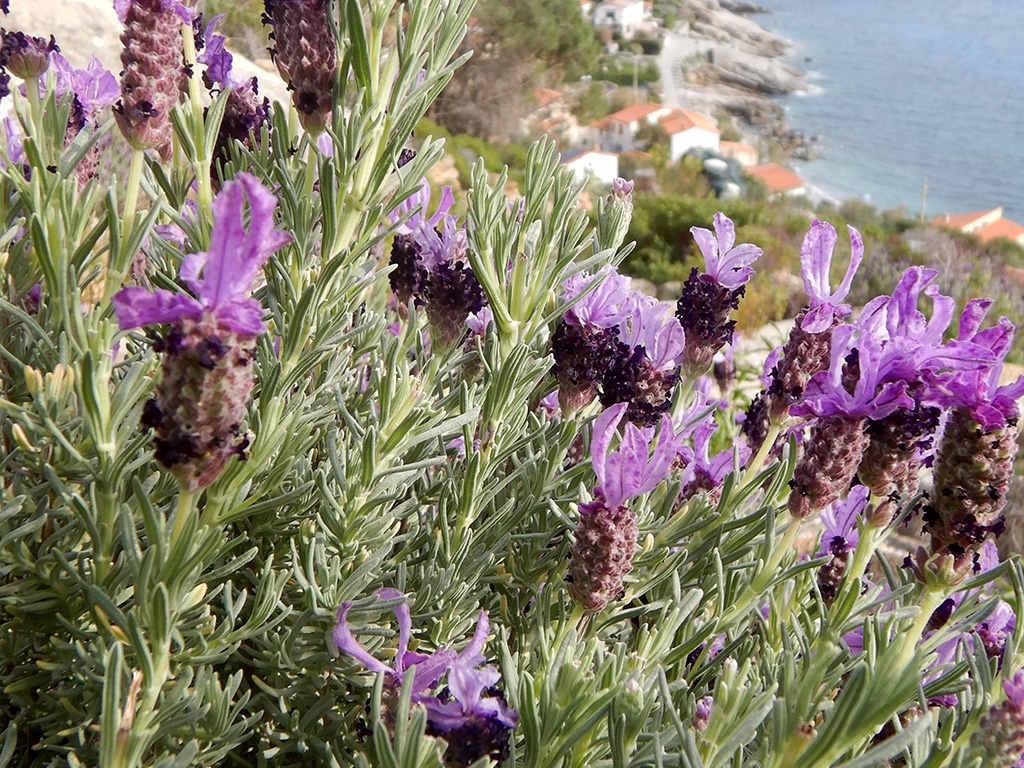
Wild lavender (Lavandula Stoechas)
On the Island's slopes, one of the plants whose blossoms herald the end of winter and the start of spring is wild lavender (Lavandula Stoechas), also known here as stecade. This small xerophilous shrub grows an average of 40-60 cm tall and is very branched, right from the base, with a square stem and distinctive narrow, soft and velvety leaves covered with fine hairs, greyish-green in colour and extremely fragrant.
When it blooms, the little grey bush lights up with colour, its small branches topped with almost cylindrical spikes bearing two to three clearly visible purple bracts with bright purplish-blue flowers, also velvety and fragrant. This plant is found on dry and sunny slopes, in the low maquis and in the scrublands, from coastal areas up to altitudes of 700 metres, favouring siliceous soils. Wild lavender has a Mediterranean habitat ranging from the coasts of North Africa, with the exception of Libya, to those of Spain, France and Italy and as far as southern Greece, Turkey, Palestine and Egypt, although it is most widespread in the western Mediterranean basin. According to Dioscorides, the Latin word for the species, stoechas, refers to the Hyères islands, off the south coast of France, called Stoichades by ancient Greek sailors.
These same islands would become famous in the Middle Ages for exporting the wild lavender that grew there naturally. Stecade is shorter in height than the better-known Lavandula officinalis or Lavandula angustifolia which grows to over a metre tall and is cultivated in great quantities in the fields of Provence, as well as in the Italian regions of Piedmont and Liguria. The latter is also distinguished by the brighter green and less grey colouring of its leaves, its longer-spiked blooms, with sparser light blue and dark blue flowers, and its sweeter, more floral fragrance compared to the more intense and spiced one of L. stoechas.
(Antonello Marchese, translation from Italian)

